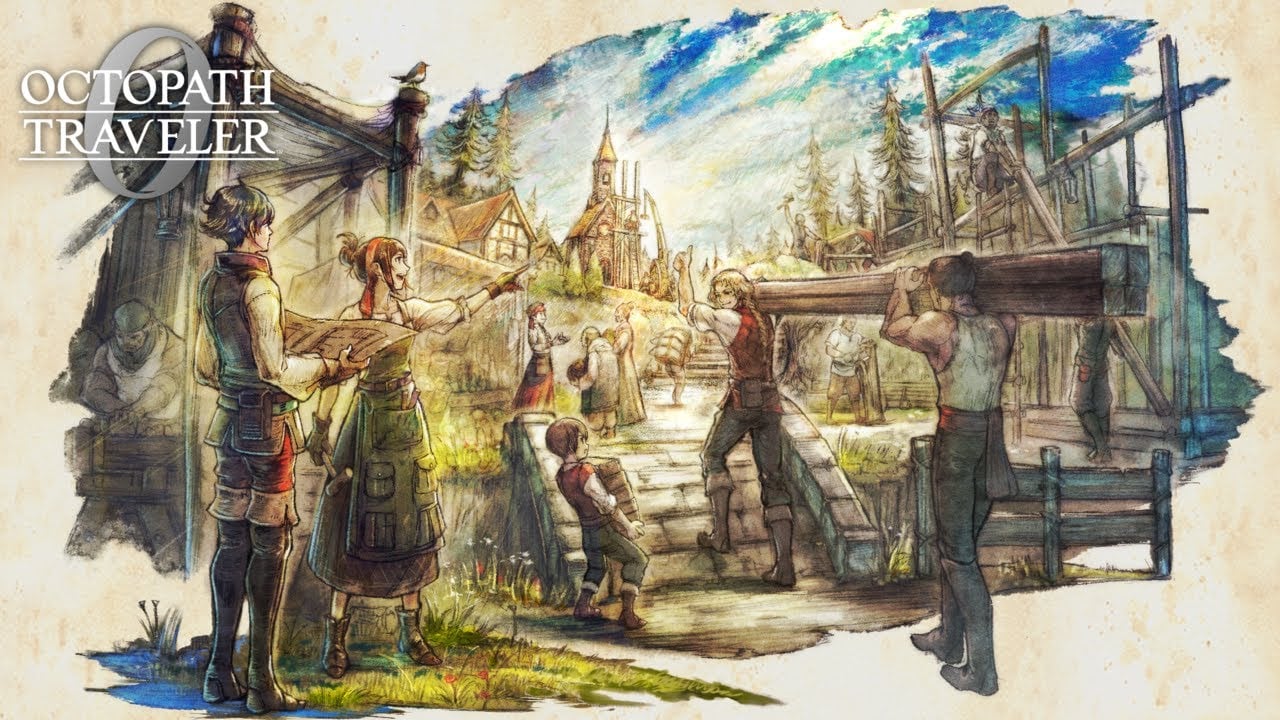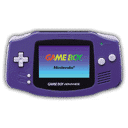
Summary:
The free Octopath Traveler 0 demo is live and it’s generous: up to three hours of play across the opening stretch with save data that carries into the full release. You can download it on Nintendo Switch and Switch 2, PlayStation 5/4, Xbox Series X|S, and PC via Steam and Windows. That means you can meet the custom lead, test eight-character combat, and lay the first bricks of your hometown rebuild without wasting a minute before launch. We cover which progress transfers, how the time limit behaves, and the smartest way to spend your first session so launch day feels like hour four—not hour one. We also highlight platform notes, pre-order perks, and small settings that make fights snappier, menus faster, and town-building less fiddly. If you want a head start that actually matters, this is the perfect window to get familiar with BP flow, row swaps, and early crafting while banking a clean file for December.
The Octopath Traveler 0 demo
The demo lets us dive into the earliest slice of Octopath Traveler 0, which is exactly what we need to lock in fundamentals before launch. Expect the prologue beats, the first quests that nudge us across Orsterra, a compact introduction to the BP system, and the initial taste of eight-character party flow. We can also place the first pieces of our future hometown and experiment with how resources and residents interact. The time cap is up to three hours, but that’s more flexible than it sounds; the limit politely encourages focused play rather than rushing, and it’s plenty to understand combat cadence, try a few jobs, and set basic priorities. Think of this as a practical workshop: learn how to break enemies quickly, how to spend and bank BP without starving damage windows, and how early gear choices impact survivability when bosses start punishing sloppy turns.

Release date, platforms, and what carries over
Octopath Traveler 0 launches in early December 2025 across all the major platforms, and the nice part is how straightforward progress transfer is. The save file we build in the demo moves into the main game, so we’re not replaying those first hours on launch day. Names, settings, story progress, gear, and the early layout of our town come along for the ride. That’s ideal for anyone who wants to spend launch weekend exploring new regions rather than retracing the same tutorial beats. Platform coverage is broad—Switch and Switch 2, PS5 and PS4, Xbox Series X|S, Steam, and Windows—so our friend group can start together regardless of hardware. If we’re planning to play on multiple systems, the simplest path is to pick the platform we’ll use at launch so the carryover is seamless and we don’t split progress across ecosystems.
How to download on each system without hiccups
Getting the demo is quick, but a couple of small steps save headaches. On Switch and Switch 2, hop into the eShop, search for “Octopath Traveler 0 Prologue Demo,” and start the download. Check storage first; clearing old screenshots and software updates frees a surprising chunk of space. On PlayStation, find the demo on the PS Store listing, queue it from your console or mobile app, and let the console handle licenses in the background. On Xbox, open the Microsoft Store, tap the demo banner, and confirm the right storage device if you use an expansion card. On Steam, the “Download Demo” button sits on the store page; while it downloads, set your default graphics to “Auto” so the game picks a safe starting baseline. If your internet is congested at home, queue the download remotely during the workday so it’s ready by the time you sit down to play.
What’s new this time: custom hero, eight-person battles, and town-building
This entry leans into player expression without abandoning the series’ identity. We create a custom lead rather than selecting from eight fixed protagonists, and that ripples into starting skills and the first tools we lean on. Battles now support eight characters with front and back rows, which adds rhythm to swaps and encourages building pairs that cover each other’s weaknesses. The town-building layer is the secret sauce that ties exploration to a clear reward loop: bring back materials, recruit new residents, add facilities, and watch our shop inventory and utility grow. It’s not busywork; even in the demo, getting basic structures up makes the next fights smoother through better items and small stat edges. The HD-2D look remains intact and lovely, the soundtrack hits the expected mix of warmth and momentum, and the overall pacing feels built to showcase the new systems rather than drown us in tutorials.
How the three-hour limit really works (and how to use it well)
“Up to three hours” sounds tight until we plan it. The clock pushes us to sample, not sprint. If we spend the first thirty minutes setting controls, reading tooltips, and practicing BP timing on fodder enemies, the next two and a half hours deliver a surprising amount of progress. Save often and avoid optional detours until you’ve cleared the first milestone boss—bank the guaranteed carryover value first, then poke around. If you hit the cap mid-quest, don’t panic; the demo ends gracefully and your save remains intact. One underrated tip: take five minutes to bind row swaps and target cycles to inputs you can hit without thinking. Every second saved during turns translates into extra encounters, extra resources, and possibly an extra side objective before the timer taps out.
Early-game routing: a smooth first session that sets up launch day
Start by exploring the immediate area to grab chests and quick vendor upgrades, then push the main objective until the combat tutorial boss. After that, divert to recruitable allies you can access quickly; filling the back row makes a night-and-day difference in survivability and lets you rotate fresh bodies into the front for burst turns. Spend modestly on weapons—prioritize one strong attacker and one reliable breaker with diverse hit types. For the town, drop the first utility building that unlocks healing items or crafting options; those pay dividends for the rest of the session. If you find yourself short on cash, fight encounters that align with your planned break types rather than random mobs—clean breaks shorten battles and reduce potion burn. Cap the run by saving at a safe spot near the next story gate so launch day starts with momentum.
Combat basics that matter in the demo: BP flow, rows, and break timing
BP is the fuel that turns safe turns into big turns. In the demo, resist the urge to spend it immediately. Bank BP until enemy shields are about to shatter, then unload with boosted skills to capitalize on the break window. Rows change how risky you can play: the back row acts like a shielded bench that lets support characters regenerate TP while the front row presses breaks and damage. Practice one pattern: probe for weaknesses with single hits, rotate to multi-hit skills once a weakness is found, and then swap your heavy hitters into the front to deliver boosted finishers during the stun. If you see a boss winding up, prioritize defense, shields, or a row swap instead of greed; the demo is generous, but the habits we build here are the ones we’ll carry into harder chapters.
Reading enemy patterns and protecting your glass cannons
Most foes telegraph big turns, and it’s tempting to race them. Better plan: cut their legs out with a well-timed break. Keep your fragile nukers in the back row until shields are low, then move them forward to cash in during the stun. Items aren’t failure—they’re tempo. Spending a mid-tier heal to keep your breaker alive often saves two turns of recovery. And if you’ve got a support with buffs or debuffs, aim for the turn immediately after a break; bosses that just face-planted are the perfect targets for weakened attack or defense shred, letting your front line go to town without fear.
Town rebuilding 101: materials, residents, and why it’s worth doing now
The town layer starts small in the demo, but even a couple of structures change the feel of the run. Facilities improve shop stock, unlock basic crafting, and sometimes trigger new interactions with recruits. Grab easy materials along your path and don’t be shy about returning to place a building if the cost is low—you’ll get the benefit immediately. Talk to everyone; early residents often hint at what they’ll unlock later. Treat the square as your long-term hub where story and systems intersect. If you’re protective of your timer, slot building actions between saves so you can gauge whether the investment pays off. When you see your first modest upgrade swing a tough fight, the value of the town layer clicks. On launch day, those early placements will feel like a gift you left for your future self.
Smart early structures that snowball benefits
Start with a facility that improves healing or item crafting, then add a utility that broadens weapon availability. A basic forge or trader line keeps your kit relevant without begging for rare drops, and an apothecary path cuts potion costs so you can heal without hoarding. If you recruit a resident who synergizes with a planned building, prioritize placing their preferred structure to unlock a perk sooner. The demo doesn’t drown us in materials, so we’re choosing impact over vanity—think function first, decorations later. Those choices define the tone of your early game and help your party punch above its weight when a boss demands a clean break chain and a decisive finisher.
Performance expectations on Switch 2, PlayStation, Xbox, and PC
HD-2D thrives on clean image stability and predictable frame pacing, and that’s exactly the vibe to expect here. On newer consoles, load times are brisk and area transitions feel snappy, which makes scouting routes and revisiting town painless. Switch 2 benefits from stronger hardware headroom without changing the series’ look; handheld sessions stay crisp, and docked play takes advantage of higher resolution targets. PlayStation and Xbox enjoy the fastest transitions and smoothest input response thanks to SSDs and beefier CPUs, which shines in battles where row swaps and targeting are constant. On PC, let the auto-detect land first, then bump shadows and texture filtering a notch if you’ve got spare GPU. Regardless of platform, the demo’s art direction does the heavy lifting: the painterly backgrounds, sharp sprites, and soft lighting remain readable and charming during busy turns.
Pre-order bonuses, editions, and save-data bonuses worth knowing
If you’re leaning digital, pre-orders include a handy starter pack with healing items and an early combat skill, which are nice but not mandatory. Physical editions mirror the digital tiers; the point is convenience rather than exclusive power. On Xbox in particular, owners of prior series entries on the console may see a small save-data bonus that adds flavor to the early hours. None of these perks break balance—they’re mild accelerants that smooth a couple of bumps so you hit the first boss with better footing. If you’re platform-agnostic, pick the ecosystem where your friends are or where you prefer to play handheld versus couch. The only real “gotcha” is splitting progress: since demo saves carry over, choose the platform you’ll stick with for the full journey to avoid do-overs.
Accessibility, control options, and comfort tweaks we recommend
Before you set foot in a dungeon, hop into settings. Increase text speed one notch so dialogue flows without outrunning your reading pace. Enable cursor memory in menus to speed up repeat actions, and invert camera axes if your muscle memory demands it. In combat, bind row swap and target cycle to comfortable buttons you can hit without looking; once those become reflex, you’ll shave seconds off every decision. If you’re sensitive to flashes or heavy bloom, nudge post-processing down slightly—HD-2D still looks lovely with gentler lighting. Subtitles, rumble intensity, and UI scaling are worth a quick pass too, especially on handheld where small edges improve comfort during longer sessions. These micro-adjustments multiply across the three-hour window and make the experience feel tailored, not generic.
Reading the field: camera and UI tips for fast, clean fights
Pull the camera back a touch in areas with lots of props so pathing is clear. Keep the battle log visible—seeing “weak” and “resist” messages at a glance helps lock in your next action. If you’re juggling many status effects, reorder your party so buffers and breakers sit next to each other on the UI; that visual cue reduces misclicks. And don’t neglect audio. Boss wind-ups have distinct cues that make it easier to defend or row swap on time, and once your ear recognizes them, you’ll react faster than you can read a tooltip.
Launch-day checklist: turning demo progress into a flying start
Save at a safe point near your next goal, with a tidy inventory and at least one backup healing stack. Leave a couple of town projects midway if the next step unlocks a new perk early in the full game—completing those right after launch is a satisfying power bump. Capture a quick screenshot of your party layout and gear so you remember your plan when you boot the full version. If you’re playing on a console with multiple profiles, confirm you’ll use the same account so the carryover is recognized. Finally, jot a two-line to-do list for launch evening: “clear story gate, upgrade breaker weapon, place apothecary.” That tiny bit of structure turns launch night into momentum rather than reorientation.
A quick word on spoilers and pacing with friends
Part of the fun is sharing discoveries, and part is letting the world surprise you. If your group is jumping in together, agree on a spoiler policy: talk builds and mechanics openly, keep story beats vague. Share your party pairings, favorite break chains, and town layout ideas; skip the cutscene summaries. That balance keeps everyone excited without flattening the sense of wonder that Octopath thrives on.
Pro tip wrap-up: small habits that pay off big
Bank BP until right before a break, then unleash. Keep glass cannons in the back row until the stun. Place one utility building early, then a weapon or apothecary upgrade. Bind row swaps to muscle-memory buttons. Save near your next milestone. These little habits turn a three-hour demo into a springboard for the full adventure. You’ll roll into December feeling settled, not scrambling, and that’s exactly the head start this demo was built to provide.
Conclusion
Starting Octopath Traveler 0 today isn’t just about scratching an itch; it’s about paving a clean road into launch. The demo’s three hours are enough to learn the new party rhythm, break smarter, and begin rebuilding the town that will quietly power your progress. With carryover saves, every minute you put in now pays dividends later. Pick your platform, tweak your settings, practice your break windows, and place that first facility. When the full game unlocks, you won’t be warming up—you’ll already be on the road, party ready, town humming, and the next chapter calling.
FAQs
- Does the demo progress carry over?
- Yes. Your save transfers to the full version, so story progress, party setup, and early town placements come with you.
- How long is the demo?
- You can play up to three hours. Plan a route and save often so you reach a clear milestone before the timer expires.
- Which platforms have the demo?
- It’s available on Nintendo Switch and Switch 2, PlayStation 5/4, Xbox Series X|S, and PC via Steam and Windows.
- Is there a recommended platform?
- Play where you’ll continue at launch, since saves carry over. If you’re split, choose the ecosystem where friends will be or where you prefer handheld vs. couch play.
- Are pre-order bonuses essential?
- Helpful, not mandatory. They smooth the opening hours with items and a skill, but smart play and early town upgrades matter more.
Sources
- OCTOPATH TRAVELER 0 demo now available, Square Enix, November 11, 2025
- New Octopath Traveler 0 Demo Available Today – What Can You Expect?, Xbox Wire, November 12, 2025
- Octopath Traveler 0 demo out today on PS5 and PS4, PlayStation Blog, November 11, 2025
- Pre-purchase OCTOPATH TRAVELER 0 on Steam, Steam, November 2025
- Octopath Traveler 0 Demo Now Available For Switch And Switch 2, Save Data Carries Over, Nintendo Life, November 12, 2025
- Octopath Traveler 0 gets new demo on all consoles and PC…, GamesRadar, November 12, 2025
- Square Enix Drops Free Octopath Traveler 0 Demo Ahead Of December Xbox Launch, Pure Xbox, November 12, 2025
- A new look at OCTOPATH TRAVELER 0, Square Enix, October 15, 2025














